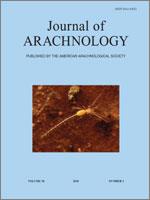The female of Orsolobus pucara Forster & Platnick 1985 is described and its genitalia examined using the scanning electron microscope (SEM). A small phylogenetic matrix with female genital and sexual behavior characters was made with the aim to study the evolution of these characters in the superfamily Dysderoidea. This is the first time that the female genitalia of a species of the family Orsolobidae have been studied in detail with SEM. The anterior portion of the female genitalia is a sclerotized structure with gland ducts and sites for muscle attachments. The posterior portion has a membranous receptaculum and a sclerotized plate that serves as attachment for muscles. We discuss the probable function of genital characters in a phylogenetic context. The anterior sclerotized elements of the female genitalia of some Dysderidae, Orsolobidae and Oonopidae species and the anterior receptaculum in the Segestriidae seem to be homologous structures because of the presence of gland ducts and sperm. However, both of these characteristics are lost in some species of these families, the anterior portion of the female genitalia being transformed into a highly modified structure serving mainly as attachment for muscles implicated in sexual behavior mechanisms.
How to translate text using browser tools
1 December 2010
Description of the female of Orsolobus pucara Forster & Platnick 1985, with comments on the functional morphology of the female genitalia in Dysderoidea (Araneae: Dysderoidea: Orsolobidae)
Matías Andrés Izquierdo,
Facundo Martín Labarque
ACCESS THE FULL ARTICLE

The Journal of Arachnology
Vol. 38 • No. 3
December 2010
Vol. 38 • No. 3
December 2010
character evolution
complex genitalia
reproductive behavior
spiders
taxonomy




